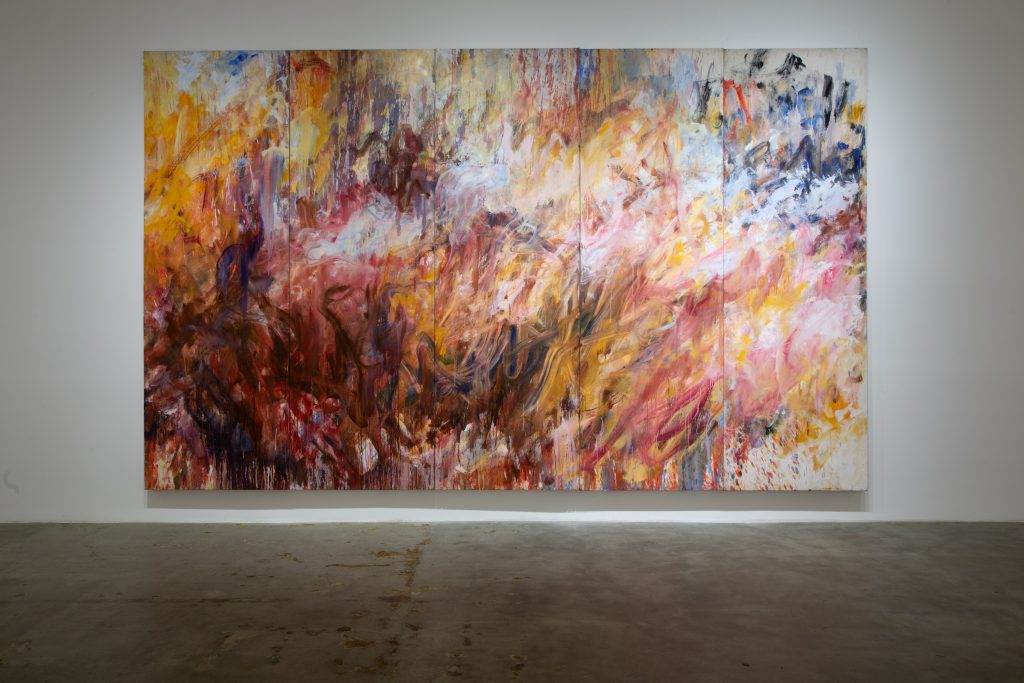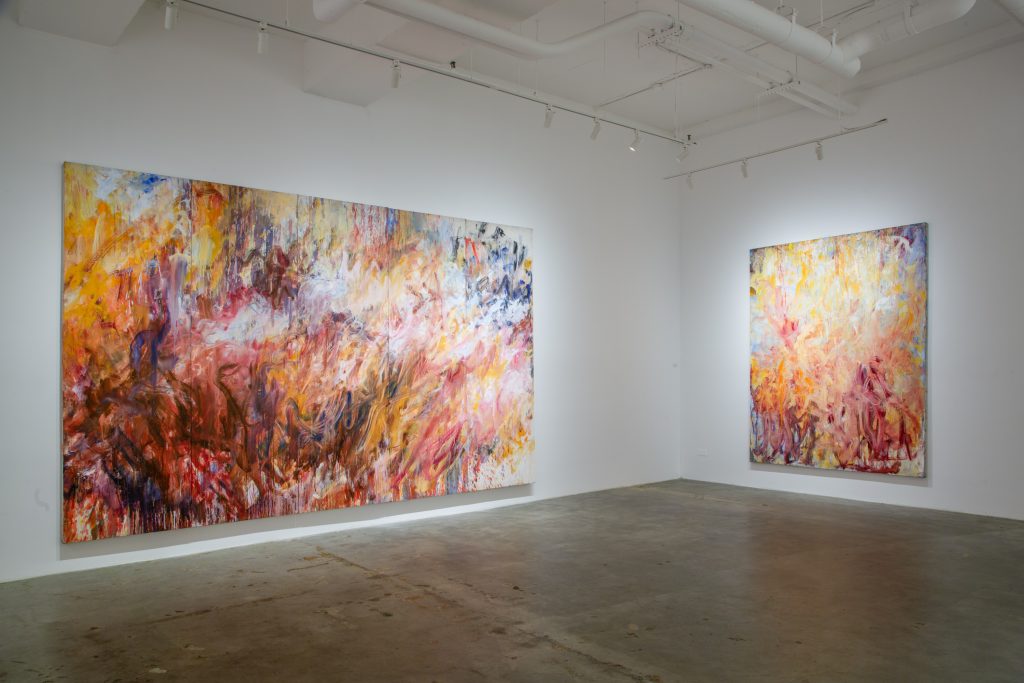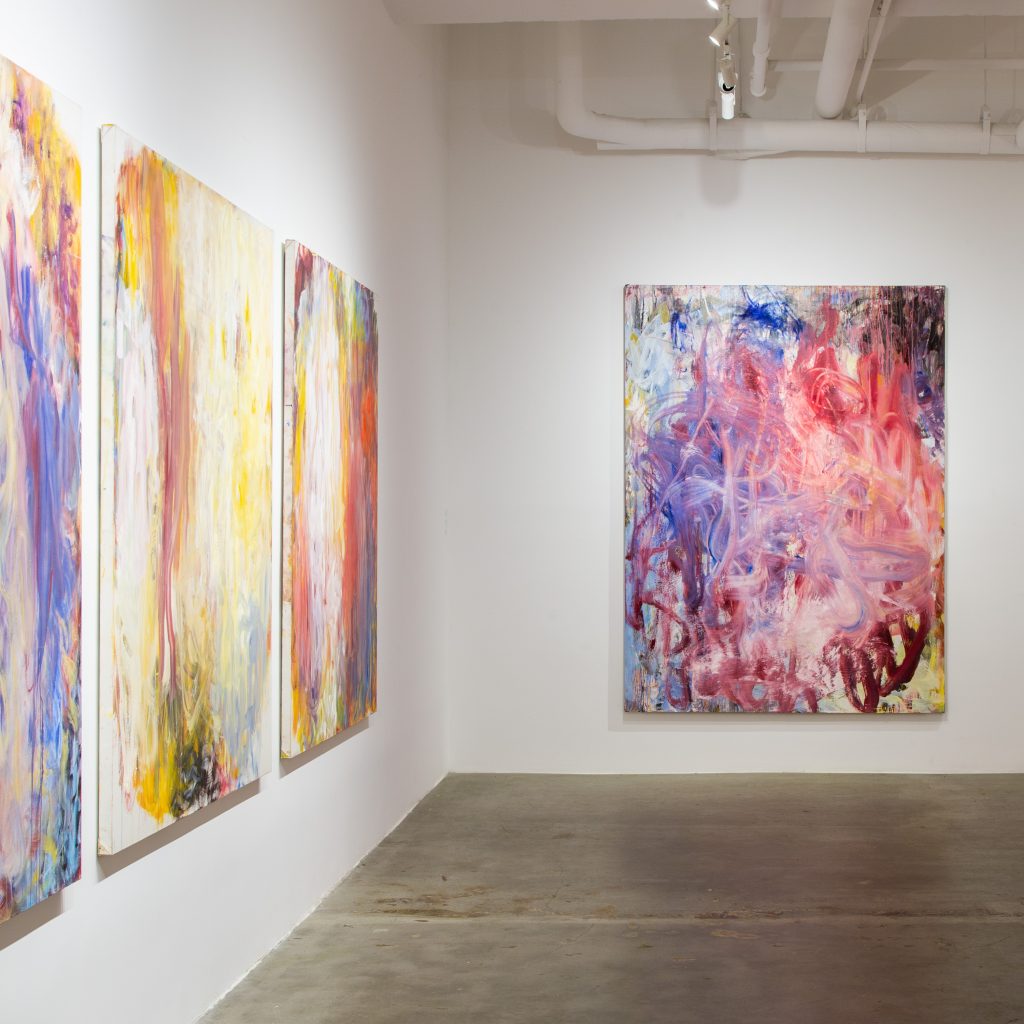by Christopher Hart Chambers

In his essay for the catalog of this exhibition, the curator, legendary critic Carter Ratcliff states, “If the painting is non-figurative it does not, by definition, show us any figures and yet it faces us with a human presence.” That is perhaps the most succinct and accurate insight regarding the intrinsic nature of abstract art I have yet come across.
Painting might be viewed as a destructive act. Starting with the perfection of the blank page, with each subsequent mark the artist violently berates the unfolding image until it is utterly betrayed – until its obliteration is complete. Thus it attains a new perfection that a single further gesture would fracture. It is an old adage that knowing when a painting is finished is the painter’s most difficult decision. One more stroke and the balance has been shifted////altered opening a Pandora’s box of new possibilities – like starting over again from a more complicated scratch. It is also possible to imply a shape or color by/// via its absence. Put that last piece of the puzzle in place and perfection is attained once again, while stifling the life out of the composition. But, one stroke shy and the image is animate. The artist may juggle the tensions and balances of a composition so the entire surface appears to slide off to the left or explode up top, or blow outwards from the surface directly into the room, blasting the viewer. But, Holliday’s pieces are often gaseous and ephemeral. They are obstinately void of form; insistently non referential.

These oil paintings comprise swooshing, choppy and scumbled, aggressive brushstrokes and earthen, chalky, glowing, or bloody coloration. Essentially, the entire litany; the meat and potatoes, of abstract expressionistic painting to date.
Obvious precedents were established by Jackson Pollack, Joan Mitchell, Willem DeKooning. Yet, Holliday does not appear to be adhering to the Greenbergian philosophy of heroic painting as an object unto itself. Holliday’s works strive to “live” and emanate presence. The problem with subtlety is that it’s well, subtle. To successfully achieve this suite of “complete” paintings is a remarkable achievement, given the mandates the painter has set himself. For, these are truly “abstract “ paintings. The expressive depiction of the works is the various moods of the human condition. Like diaristic relics of a day.
Resisting imagery is no easy feat. Cloud gazing is an evolutionary survival mechanism: finding referential////reflective imagery or animalistic faces – faces; eyes and teeth – where none exist, startling at movement flickering along a periphery. Humankind’s imagination and intelligence rely on associations of seemingly unrelated forms and getting spooked in the night has kept us alive and allowed us to evolve to this day. Therefore, Frank Holliday’s acceptance of pure abstract thought simultaneously represents a defiance of this natural instinct and embrace of primal emotion, as well as “spiritual” synthesis -seeing, feeling “ God’s” glow in yellow sunshine and blue shadows; as per impressionism, or the darkened voids.

RED SELLS: taking advantage of mankind’s color theory in both its psychological implications (red sells), blue is mysterious (because it appears to recede into our atmosphere- and is therefore a relaxing shade), hot and cool hues = danger or safety; bliss) as well as their illusionistic properties – red optically jumps forward because it represents heat, blood, and danger, therefore excitement (which is why it “sells”), blue is deep; golden yellow establishes a stably royal, or neutral platform; spatially perceptual to man. These are our basic haptic observational environmental tendencies in tandem with the emotional responses provoked by the primary colors invoked to humans. Other tones combine the above to various affects. I doubt Frank Holliday consciously pre-thought his use of color in specific passages in order to precede specific responses; it was more of an intuitive emotive thing . . . he employed juxtapositions of colors enjoining moods and emotive response instinctually directing expansive properties; insistently destroying recognizable imagery, in order to communicate mood only – not illustratively, such as,”oh, I will make a sad or happy picture,” employing A, B, C, or D, like a book of tricky techniques – these were used intuitively with absence of conscious intention. And THAT is why this work is relevant to the human condition, today, yesterday, forever. Each mark is the beginning of the end of the beginning of the end of the beginning of the end of the . . . .
Hey, I haven’t really described the paintings. Just look at the photos.
